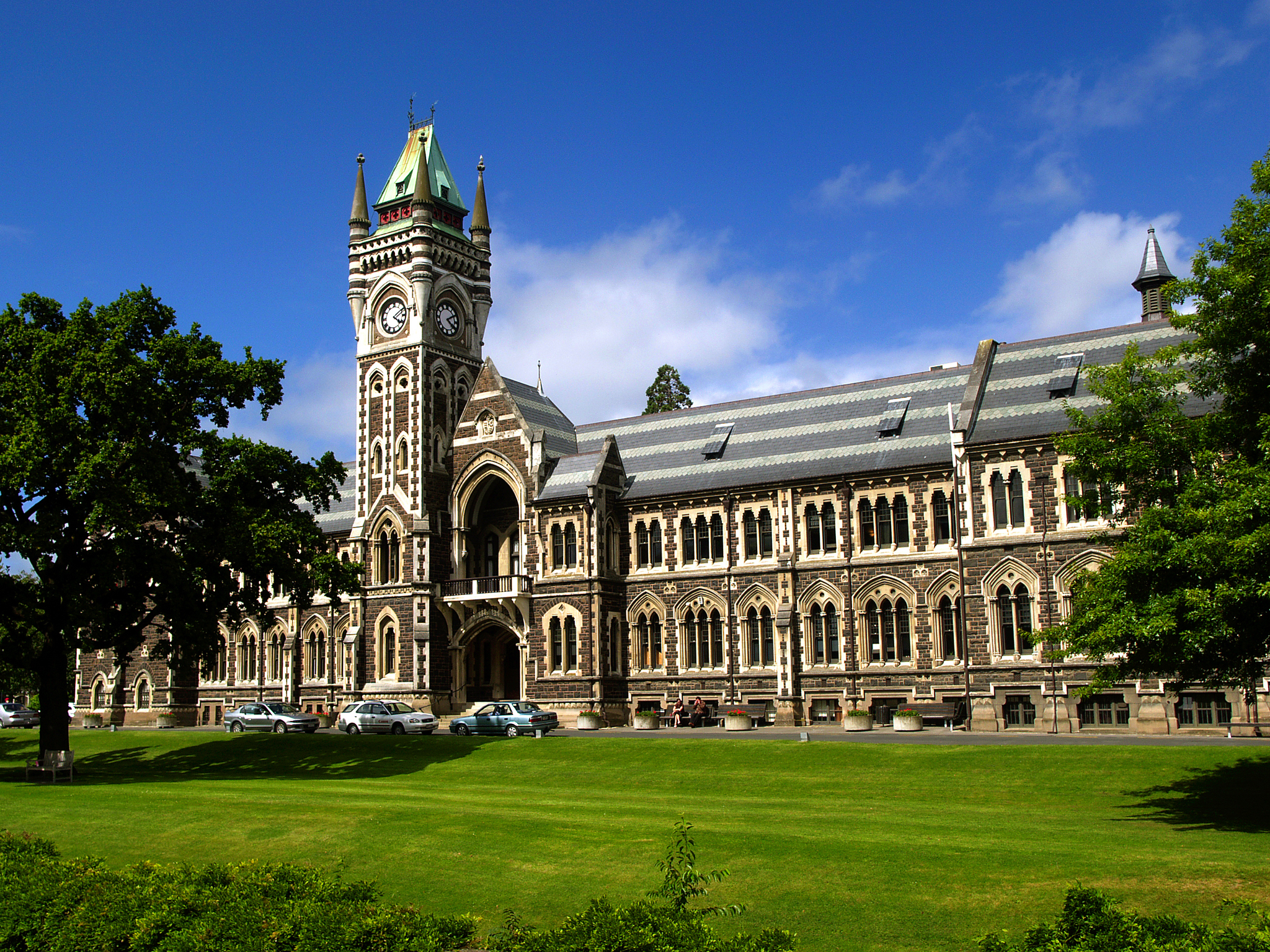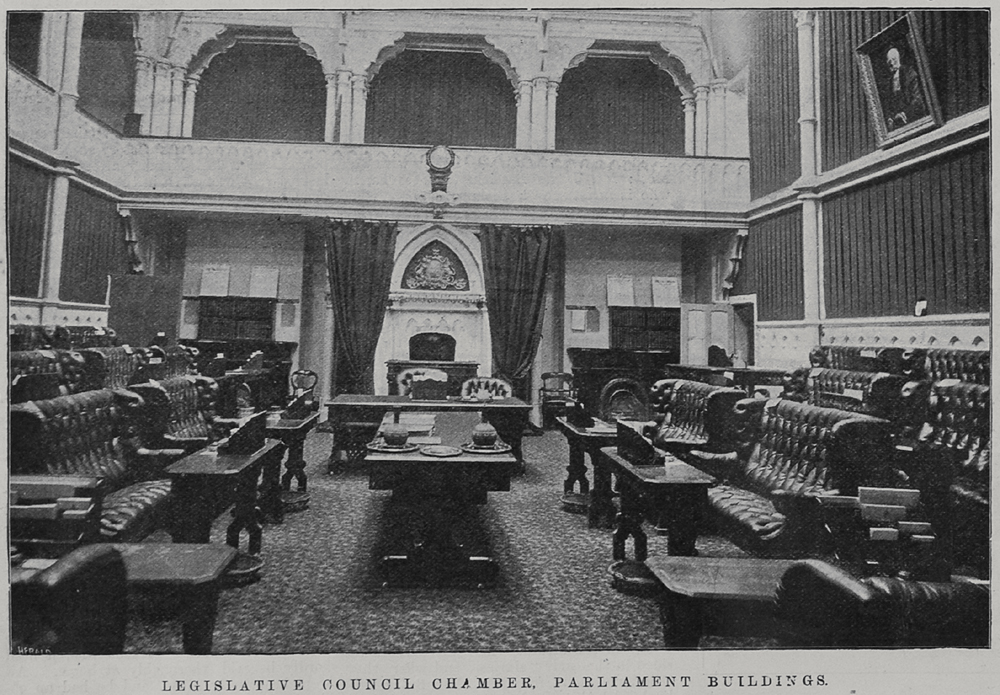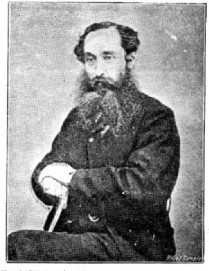|
John Richardson (New Zealand Politician)
Sir John Larkins Cheese Richardson (4 August 1810 – 6 December 1878) was a 19th-century New Zealand politician, and a cabinet minister. Military career Richardson was born in Bengal, India. His father was Robert Richardson, a civil servant of the East India Company who ran a silk factory. Richardson received his education at the Company's Military Seminary in Addiscombe, Surrey, England. Afterwards, he was in the Bengal Horse Artillery, and rose to the rank of Major. He took part in the Afghan Campaign, 1842 and was decorated for gallantry for his part in the attack on Istalif. In 1845–1846 Richardson also took part in the First Anglo-Sikh War. Political career He was Superintendent of Otago Province 1861–1862 at the start of the Otago Gold Rush. He then represented several electorates in Parliament: City of Dunedin in 1862 (resigned), then Dunedin and Suburbs North from 1863 to 1866, then Town of New Plymouth from 1866 to 1867, when he resigned. He was then ... [...More Info...] [...Related Items...] OR: [Wikipedia] [Google] [Baidu] |
The Honourable
''The Honourable'' (British English) or ''The Honorable'' (American English; American and British English spelling differences#-our, -or, see spelling differences) (abbreviation: ''Hon.'', ''Hon'ble'', or variations) is an honorific Style (manner of address), style that is used as a prefix before the names or titles of certain people, usually with official governmental or diplomatic positions. Use by governments International diplomacy In international diplomatic relations, representatives of foreign states are often styled as ''The Honourable''. Deputy chiefs of mission, , consuls-general and consuls are always given the style. All heads of consular posts, whether they are honorary or career postholders, are accorded the style according to the State Department of the United States. However, the style ''Excellency'' instead of ''The Honourable'' is used for ambassadors and high commissioners. Africa The Congo In the Democratic Republic of the Congo, the prefix 'Honourable' o ... [...More Info...] [...Related Items...] OR: [Wikipedia] [Google] [Baidu] |
Dunedin By-election, 1862 (2nd)
The 1862 City of Dunedin by-elections were three by-elections held in the electorate in Dunedin following three resignations. The City of Dunedin electorate was one of the original 24 electorates used for the 1st New Zealand Parliament in 1853. In 1862 it was a two-member electorate in the 3rd New Zealand Parliament The 3rd New Zealand Parliament was a term of the Parliament of New Zealand. Elections for this term were held between 12 December 1860 and 28 March 1861 in 43 electorates to elect 53 MPs. Two electorates were added to this during this term, Go .... That year, the following by-elections were held. March 1862 Thomas Dick had resigned as his business interests meant that he could not travel to Auckland for the current session. Major Richardson was nominated to replace Dick, who then decided to stand again. At a nomination meeting on Tuesday, 18 March, a show of hands gave 15 for Dick and 14 for Richardson; Richardson called for a poll. But later it was found th ... [...More Info...] [...Related Items...] OR: [Wikipedia] [Google] [Baidu] |
Dunedin Northern Cemetery
The Dunedin Northern Cemetery is a major historic cemetery in the southern New Zealand city of Dunedin. It is located on a sloping site close to Lovelock Avenue on a spur of Signal Hill close to the Dunedin Botanic Gardens and the suburb of Opoho, overlooking Dunedin North and Logan Park. The site was set aside in 1872, with the last plot being purchased in 1937. The cemetery forms part of Dunedin's Town belt, a green belt surrounding the inner city. Unlike many cemeteries of its age, Dunedin Northern Cemetery is not divided by denomination, and with its landscapes and wooded slopes remains an important part of the city's Victorian landscape. The cemetery contains many notable graves and tombs, most prominently the mausoleum of William Larnach, designed by R.A. Lawson as a miniature replica of First Church. Other notable burials and interments include Thomas Bracken and Vincent Pyke. There are war graves of 17 Commonwealth service personnel from World War I and 3 from W ... [...More Info...] [...Related Items...] OR: [Wikipedia] [Google] [Baidu] |
Thomas Jeffery Parker
Thomas Jeffery Parker F.R.S. (17 October 1850 – 7 November 1897) was a zoologist who worked in New Zealand. Biography Parker was born at 124 Tachbrook Street in London on 17 October 1850 the son of the anatomist William Kitchen Parker. He studied at Clarendon House School and graduated from the University of London in 1868. At the age of 22, he worked with Thomas Henry Huxley in Huxley's zoological demonstrations, forming a teaching collection and organising laboratory practicals. Huxley's work on crayfish kindled in Parker an interest in crustaceans, and he went on to study the marine "crayfish" (spiny lobsters) of New Zealand, together with his student Josephine Gordon Rich, who later married William Aitcheson Haswell. On 23 December 1874, Thomas Jeffery Parker married Charlotte Elizabeth Rossell in Bramley, Yorkshire. In 1880, they emigrated to New Zealand. Parker become Professor of Zoology at the University of Otago in Dunedin, succeeding Frederick Hutton. He was al ... [...More Info...] [...Related Items...] OR: [Wikipedia] [Google] [Baidu] |
Josephine Rich
Josephine Gordon Rich later Haswell (1866–1940) was a New Zealand zoologist and one of only four New Zealand women who published results of her scientific work before 1901. Early life and education Rich was born in 1866 in Spaxton, England, the youngest of five children of William Gordon Rich (1829–1912) and his wife. Her father was a runholder and Justice of the Peace in Southland, but Gordon Rich was born in England, where the family may have travelled for the education of Josephine's older brothers. Scientific work In 1891, Rich achieved the highest grade in all her first year classes in zoology, botany, general biology, and practical biology from the University of Otago. Rich does not appear to have graduated despite her high grades, but this may be because she was not eligible to graduate, having been homeschooled. In 1889/1890, Dunedin hosted the New Zealand and South Seas Exhibition, for which Parker designed an exhibit on animal evolution. Rich contributed, amon ... [...More Info...] [...Related Items...] OR: [Wikipedia] [Google] [Baidu] |
University Of Otago
, image_name = University of Otago Registry Building2.jpg , image_size = , caption = University clock tower , motto = la, Sapere aude , mottoeng = Dare to be wise , established = 1869; 152 years ago , type = Public research collegiate university , endowment = NZD $279.9 million (31 December 2021) , budget = NZD $756.8 million (31 December 2020) , chancellor = Stephen Higgs , vice_chancellor = David Murdoch , administrative_staff = 2,246 (2019) , academic_staff = 1,744 (2019) , students = 21,240 (2019) , undergrad = 15,635 (2014) , postgrad = 4,378 (2014) , doctoral = 1,579 (2019) , other = , city = Dunedin , province = Otago , country = New Zealand (Māori: ''Ōtepoti, Ōtākou, Aotearoa'') , coor = , campus = Urban/ University town 45 ha (111 acres) , colours = Dunedin Blue and Gold , free_label = Student Magazine , free = ''Critic'' , affiliations = MNU , website https://www.otago.ac.nz, logo = Logo of the University of Otago.svg The Un ... [...More Info...] [...Related Items...] OR: [Wikipedia] [Google] [Baidu] |
Learmonth White Dalrymple
Learmonth White Dalrymple (c.1827–26 August 1906) was a New Zealand educationalist who campaigned for girls' secondary education in Dunedin and for women to be admitted to the University of Otago. This was the first Australasian university to agree to this and the school is said to be the first public high school for girls in the Southern hemisphere. Early life She was born in Coupar Angus, Angus, Scotland about 1827, the eldest of nine children. Her unusual name most likely comes from the Learmonth family, which married into the Dalrymple family. However, her name was registered as Larmonth at baptism on 21 July 1827. She went to school at Madras College in St Andrews. She later considered her schooling inadequate, particularly lacking in mathematical training, which her father considered an unsuitable subject for women. Her mother Janet (née Taylor) died on 23 February 1840, leaving eight surviving children. Her father William Dalrymple, an ironmonger and trader in minerals, ... [...More Info...] [...Related Items...] OR: [Wikipedia] [Google] [Baidu] |
New Zealand Legislative Council
The New Zealand Legislative Council was the upper house of the General Assembly of New Zealand between 1853 and 1951. An earlier arrangement of legislative councils for the colony and provinces existed from 1841 when New Zealand became a colony; it was reconstituted as the upper house of a bicameral legislature when New Zealand became self-governing in 1852, which came into effect in the following year. Unlike the elected lower house, the House of Representatives, the Legislative Council was wholly appointed by the governor-general. The New Zealand Constitution Act 1852 had authorised the appointment of a minimum of ten councillors. Beginning in the 1890s, the membership of the upper house became controlled by government of the day. As a result, the Legislative Council possessed little influence. While intended as a revising chamber, in practice, debates and votes typically simply replicated those in the lower house. It was abolished by an Act of Parliament in 1950, with ... [...More Info...] [...Related Items...] OR: [Wikipedia] [Google] [Baidu] |
Otago Gold Rush
The Otago Gold Rush (often called the Central Otago Gold Rush) was a gold rush that occurred during the 1860s in Central Otago, New Zealand. This was the country's biggest gold strike, and led to a rapid influx of foreign miners to the area – many of them veterans of other hunts for the precious metal in California and Victoria, Australia. The rush started at Gabriel's Gully but spread throughout much of Central Otago, leading to the rapid expansion and commercialisation of the new colonial settlement of Dunedin, which quickly grew to be New Zealand's largest city. Only a few years later, most of the smaller new settlements were deserted, and gold extraction became more long-term, industrialised-mechanical process. Background Previous gold finds in New Zealand Previously gold had been found in small quantities in the Coromandel Peninsula (by visiting whalers) and near Nelson in 1842. Commercial interests in Auckland offered a £500 prize for anyone who could find payable qu ... [...More Info...] [...Related Items...] OR: [Wikipedia] [Google] [Baidu] |
Superintendent (New Zealand)
Superintendent was the elected head of each Provincial Council in New Zealand from 1853 to 1876. History Provinces existed in New Zealand from 1841 until 1876 as a form of sub-national government. After the initial provinces pre-1853, new provinces were formed by the New Zealand Constitution Act 1852. This Act established the first six provinces of Auckland, New Plymouth, Wellington, Nelson, Canterbury, and Otago. Other provinces were established later. Each province elected its own legislature known as a Provincial Council, and elected a Superintendent who was not a member of the council. The elections for council and superintendent were not necessarily held at the same time. Following abolition, the provinces became known as provincial districts. Their only visible function today is their use to determine, with the exception of the Chatham Islands, Northland, and South Canterbury, the geographical boundaries for anniversary day public holidays. Role of superintendents The ... [...More Info...] [...Related Items...] OR: [Wikipedia] [Google] [Baidu] |
New Plymouth (New Zealand Electorate)
New Plymouth is a New Zealand parliamentary electorate. It was first created for the 1st New Zealand Parliament in 1853 and has existed since, with one 32-year interruption. The electorate was initially called Town of New Plymouth. The electorate is currently held by Glen Bennett for Labour, as he defeated National's Jonathan Young in the 2020 general election. Population centres In the 1927 electoral redistribution, the North Island gained a further electorate from the South Island due to faster population growth. Five electorates were abolished, two former electorates, including New Plymouth, were re-established, and three electorates were created for the first time. The electorate includes the following population centres: * New Plymouth (57,600) * Waitara (6,312) * Ōpunake (1,440) * Ōakura (1,380) * Ōkato (561) History The electorate was originally the Town of New Plymouth from 1853 to 1879. The name of the electorate was changed to New Plymouth from 1879 to 1896. Th ... [...More Info...] [...Related Items...] OR: [Wikipedia] [Google] [Baidu] |
1866 New Zealand General Election
The 1866 New Zealand general election was held between 12 February and 6 April to elect 70 MPs to the fourth term of the New Zealand Parliament. In 1867 four Māori electorates were created, initially as a temporary measure for five years. The first Māori elections for these seats were held in 1868, with universal suffrage for Māori males over 21. The first four Māori members of parliament were Tareha Te Moananui ( Eastern Maori), Frederick Nene Russell (Northern Maori) and John Patterson (Southern Maori), who all retired in 1870; and Mete Kīngi Paetahi Mete Kīngi Te Rangi Paetahi (c. 1813 – 22 September 1883) was a Member of Parliament in New Zealand. He was one of four Māori elected in the first Māori elections of 1868 for the new Māori electorates in the House of Representatives. ... ( Western Maori) who was defeated in 1871. Results a Moorhouse was elected in both the Mount Herbert and Westland electorates. He chose to represent Westland. Notes R ... [...More Info...] [...Related Items...] OR: [Wikipedia] [Google] [Baidu] |
.jpg)




